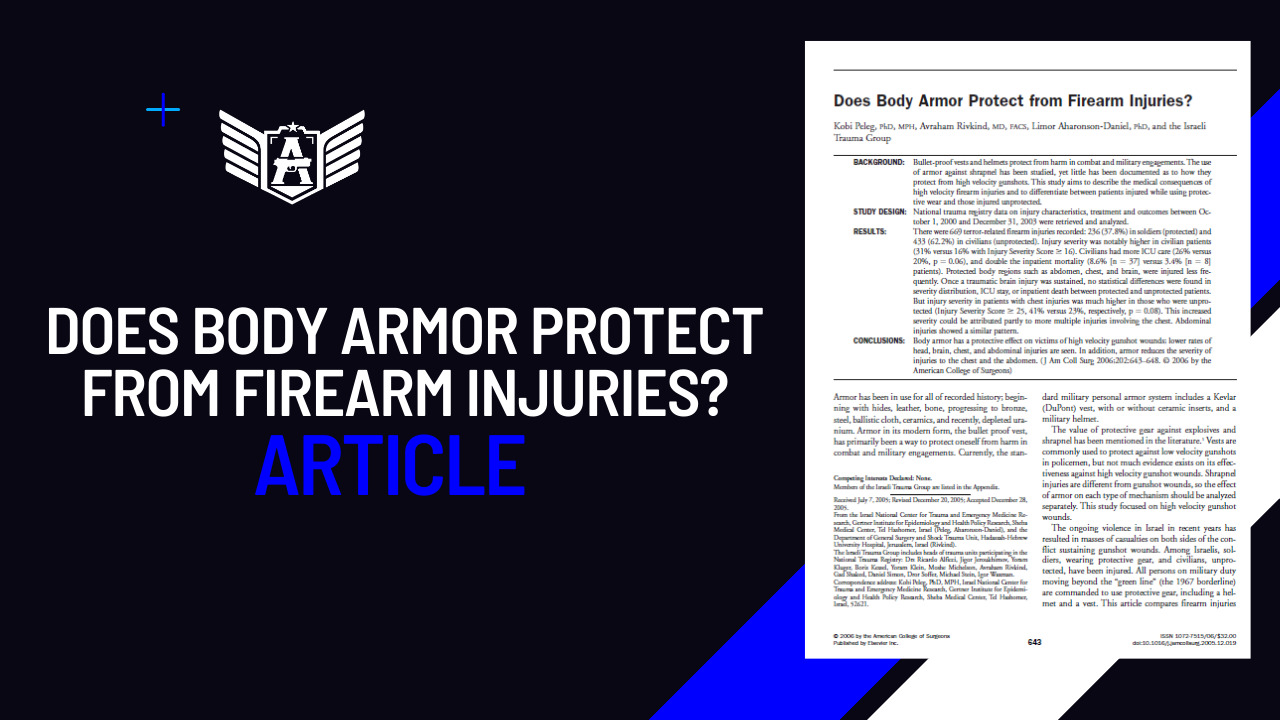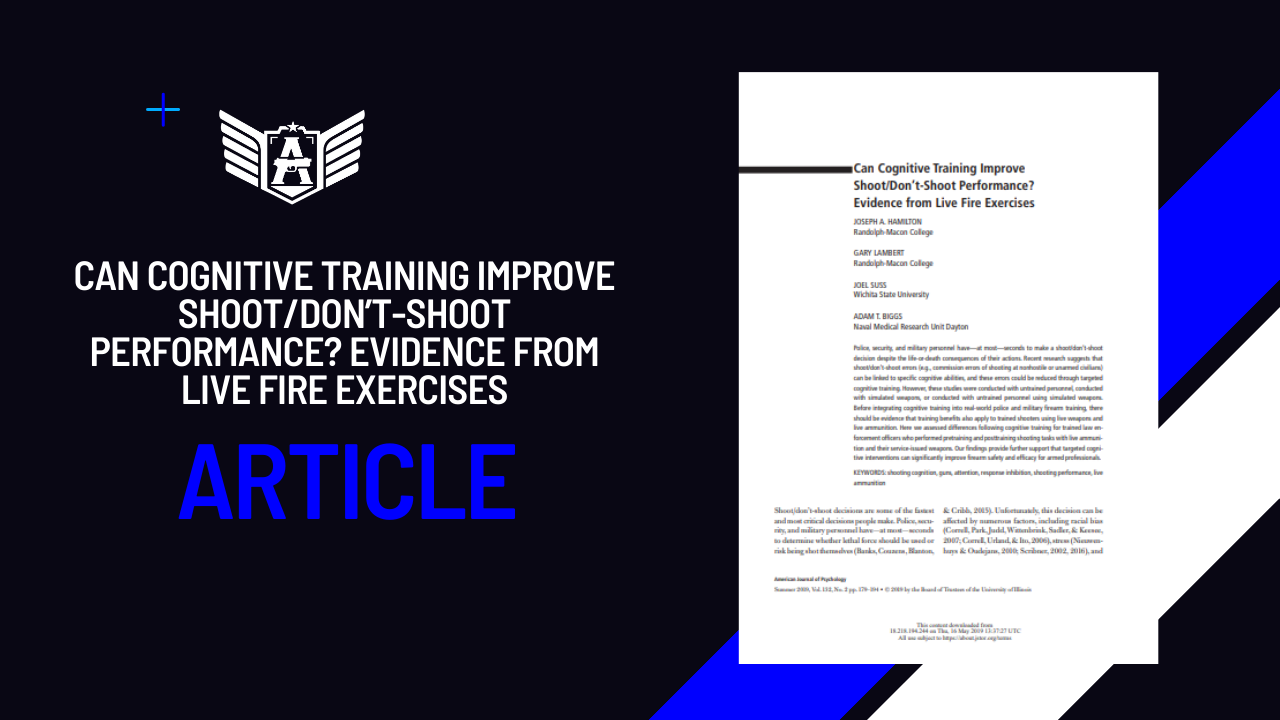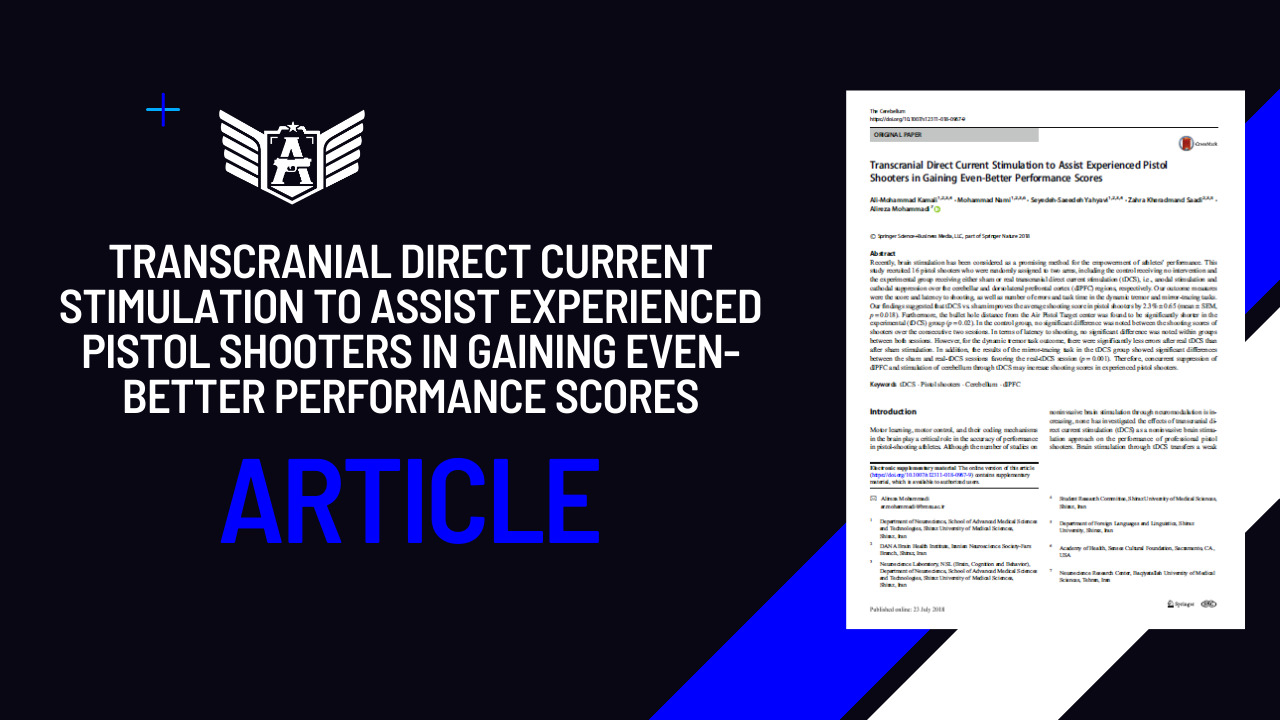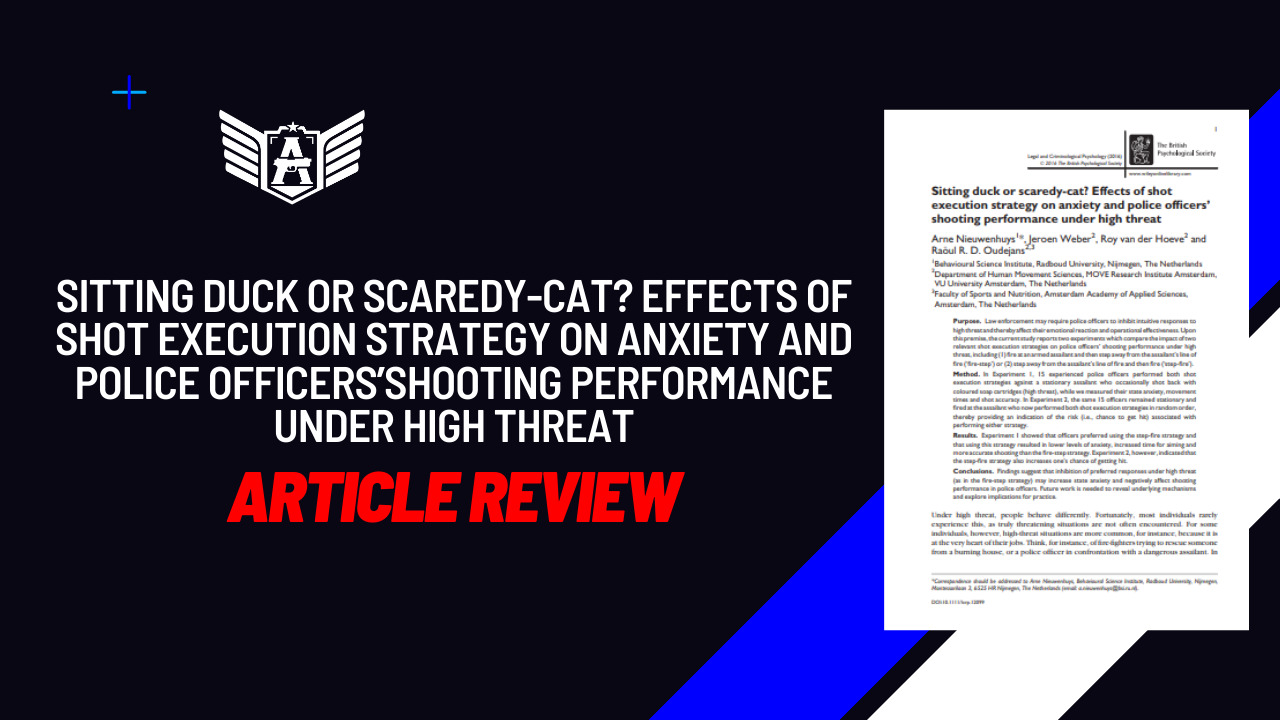Objective: This study aimed to investigate the medical consequences of firearm injuries and distinguish between individuals injured while wearing protective body armor during military duty (referred to as “protected”) and those injured in civilian activities without such protection (referred to as “unprotected”).
Methods:
- Data Source: The study utilized data from the Israeli national trauma registry (ITR) for the period from October 1, 2000, to December 31, 2003.
- Study Population: The study included Israeli residents and tourists who suffered terror-related injuries (ICD-9-CM codes E990 to E998).
- Trauma Centers: Data were collected from 10 of the 26 trauma centers in Israel, including all six level I trauma centers and four major regional trauma centers.
- Soldiers and Civilians: Soldiers in this study were defined as individuals injured during military activity, irrespective of their uniform. Civilians included individuals injured while performing routine civilian activities during terror attacks.
- Data Collected: The study collected data on patient characteristics (e.g., age, gender), injury type and diagnosis, treatment, hospital facilities utilization, and outcomes (survival and disposition).
- Injury Classification: Medical diagnoses were coded using ICD-9-CM and Abbreviated Injury Scale (AIS) coding. Injuries were categorized by body region and nature.
- Statistical Analysis: Statistical analysis was performed using SAS software, employing the Pearson chi-square test for categorical data and t-test for continuous variables. A p-value < 0.05 was considered statistically significant.
Results:
- Total Injuries: The study identified 669 terror-related firearm injuries in the ITR during the study period, with 37.8% (236 cases) sustained by individuals on military duty and 62.2% (433 cases) by civilians.
- Gender and Age: Among the overall study population, 84% were men. Soldiers were notably younger (mean age 22.3 years) than injured civilians (mean age 30.6 years).
- Injury Severity: Civilians exhibited significantly higher injury severity (measured by Injury Severity Score or ISS) than military personnel, with 31% of civilians having an ISS of 16 or higher, indicating severe or critical injuries.
- Intensive Care and Mortality: Intensive care utilization was slightly higher among civilians (26%) compared to military personnel (20%), though not statistically significant. Inpatient mortality was more than twice as high among civilians (8.6%) than soldiers (3.4%).
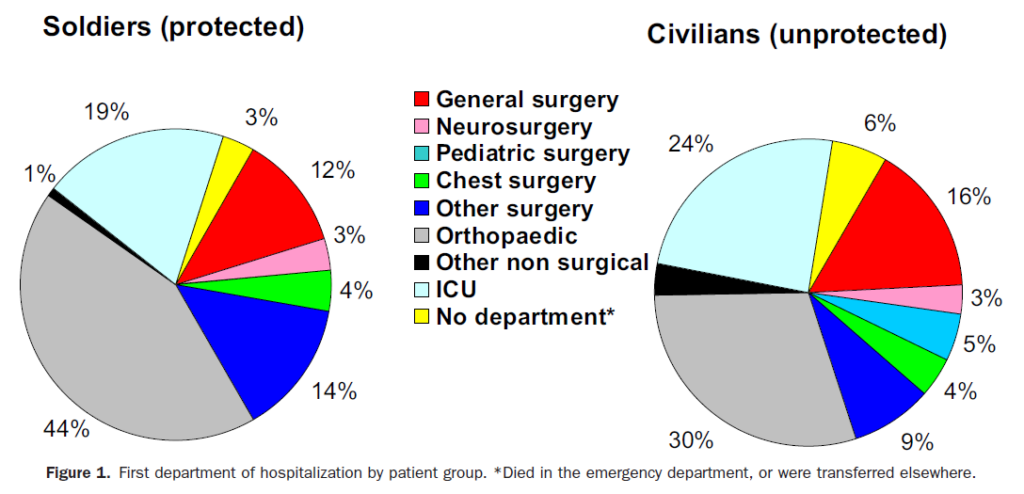
Conclusion: This study investigated the medical consequences of firearm injuries in Israel, specifically comparing injuries sustained while on military duty (protected) with those sustained during civilian activities (unprotected). It found that civilians generally experienced more severe injuries and higher mortality rates than soldiers. This research highlights the importance of body armor in protecting military personnel and the potential risks faced by civilians during terror-related incidents.

Source: Peleg, K. et al. (2006). Does Body Armor Protect from Firearm Injuries? Journal of the American College of Surgeons, 203(4), 542-547.

